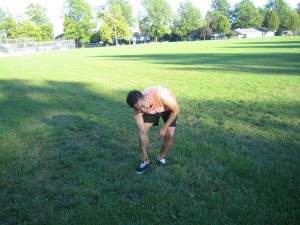Heat rash is a skin irritation common in hot and humid weather. It usually forms when obstructed pores or sweat ducts hold perspiration under the skin. It interrupts the heat regulating mechanism of the body and result to fever, discomfort and exhaustion. It is characterized by the development of blisters which can be superficial or deep and red lumps and rashes that become severely itchy.
Symptoms
- Itchiness of the area
- Looks like a patch of bumps or pimples
- Red streaks
- Pain, swelling or warmth of the skin
Move the affected person with heat rash in a cool and dry place at least 70 degrees F. - Swollen lymph nodes in the armpit, neck or groin
- Pus or fluids drains out from the itchy area
- Fever of 100.4 degrees F
Causes of heat rash
- A sweat duct of the newborn baby which are not fully develop can easily rupture and trap perspiration under the skin. Heat rash can arise in the initial week of life, particularly if the baby is warmed in an incubator, dressed warmly or has a fever.
- Hot and humid weather condition
- Overheating of the body such as dressing warmly or sleeping under an electric blanket.
- Performing intense exercises and any activities that result to heavy sweating.
- Confined in bed for too long especially when having a fever.
Treatment
- Move the affected person in a cool and dry place at least 70 degrees F. Another alternative is moving into a shaded area. Most cases of heat rash disappear after cooling off.
- Loosen or remove tight clothing and expose the affected area. Let the skin breathe freely to prevent blockage of the sweat glands.
- Drink plenty of fluids to prevent dehydration. Avoid hot beverages and drink plenty of cold water to lower temperature of the body.
- Take cool showers or baths to lower the body temperature and use antibacterial soap to clean the area.
- Avoid popping the blisters to prevent scarring of the skin. Some blisters will burst and let them heal naturally and avoid picking on the area to prevent further damage and worsen the condition.
- Take the prescribed over-the-counter 1% hydrocortisone cream or calamine lotion to lessen the itchiness.
Disclaimer / More Information
The material posted on this page on heat rash is for learning purposes only. Learn to recognize and manage heat-related ailments by taking a first aid and CPR class with one of our training providers.

